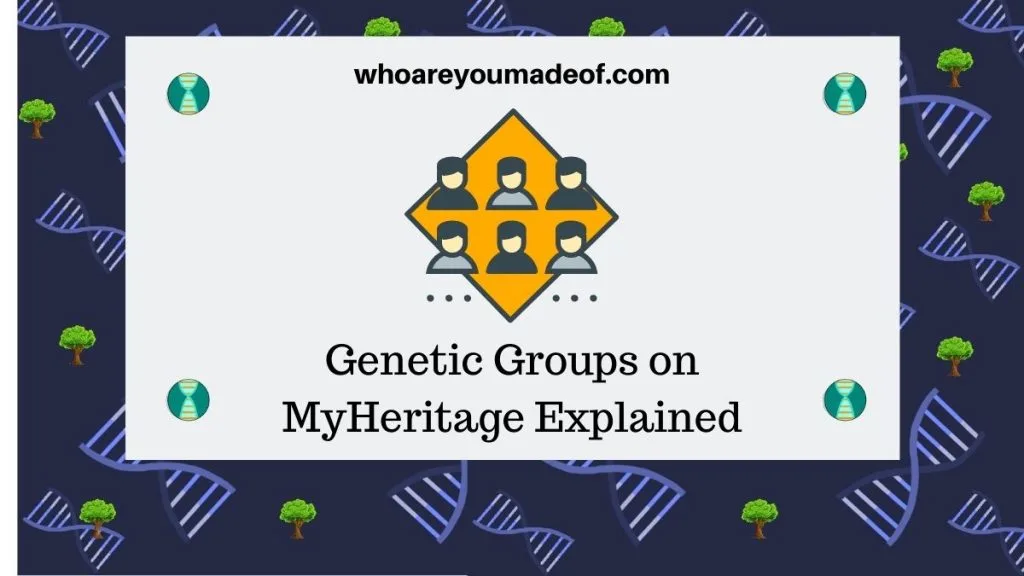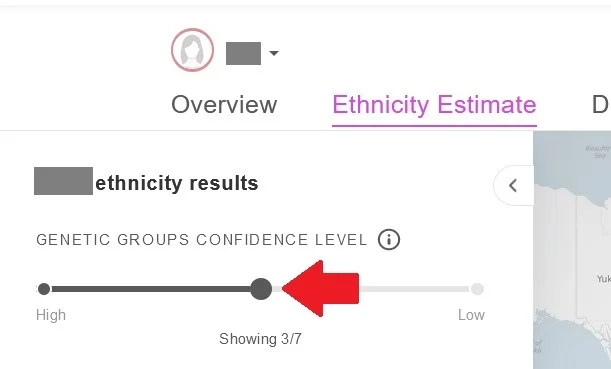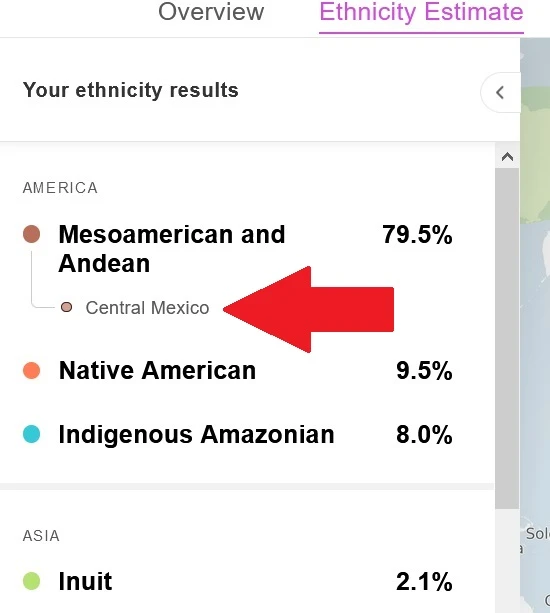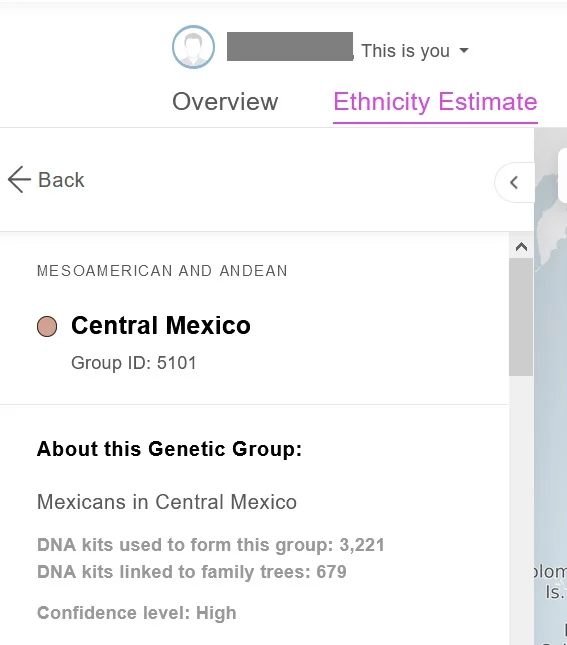Did you get a Genetic Group on MyHeritage DNA? In this post, learn what it means to get assigned to one of the 2,114 available Genetic Groups, and how to use this information.
The Genetic Group feature on MyHeritage DNA is an exciting new development for those who have tested with the site. This feature is also available to those MyHeritage users who have uploaded their DNA from other companies.

There are more than two thousand Genetic Groups on MyHeritage, providing additional insight into the ethnicity estimate. The Genetic Groups available currently cover every continent except Australia and Antarctica.
In other words, the chances of getting assigned a Genetic Group are high. There are Genetic Groups covering ethnicities and regions that other DNA testing companies don't currently include on their results, like Ethiopian Jewish and Romani.
What are Genetic Groups on MyHeritage?
Genetic Groups can illustrate how your ancestors migrated from one part of the world to another, or a very specific region to which you might be able to trace your heritage. In addition, the Genetic Group is different than an ethnicity.
According to MyHeritage, members of the same Genetic Group can have a diverse genetic background.
What does it mean to have more than one Genetic Group?
You might find that you belong to more than one Genetic Group. Those of us with ancestors from many different countries or regions will find that we might belong to many groups.
This simply means that our DNA matches multiple Genetic Groups.
Are Genetic Groups always correct?
Each Genetic Group that you see on your MyHeritage results matches your DNA with a different level of confidence. If you match a group with a high degree of confidence, you are likely genetically connected to that group.
Some Genetic Groups might match your DNA with a lower confidence level, however. If you match a group at a low confidence level, however, it doesn't necessarily mean that you are not connected to that group.
A high confidence level is stronger evidence that you have an ancestral connection to the Genetic Group. If you match at a low confidence level, you will simply need to search for additional evidence to decide whether this group matches your ancestry.
Interestingly, MyHeritage allows some users to adjust the confidence level on our Genetic Groups. If we adjust to a higher confidence level, we will see less groups on our list, but we can be more sure about our connection to them.
If we adjust the level to the lowest confidence level, we will have more groups, but the evidence of the connection to those groups is weaker. I find it is interesting to see the lower confidence groups, since these may reveal unexpected connections.

In the image above, you can see where you should click to adjust the confidence level for your Genetic Groups. At the top of the ethnicity estimate, you can click the slider for a higher or lower confidence level.
How to find your Genetic Group on MyHeritage Results
In order to locate your Genetic Group, or groups, you must access your MyHeritage DNA ethnicity estimate from your DNA results overview page. This page can be found by clicking on the DNA icon at the top of the page that you see once you login to your MyHeritage account.
Once you are on your DNA results over page, simply click on your Ethnicity Estimate tab, which is located right next to the Overview tab. Then, you will be able to see which Genetic Groups match your DNA.

In the image above, the red arrow points to this user's single Genetic Group. All of their known ancestors going back about 6 generations in their family tree were born in the same isolated region of Central Mexico.
Thus, they were not surprised to see that they belonged to the Genetic Group "Central Mexico". In fact, this point leads me to the next topic of discussion.
Why are some Genetic Groups listed under the estimate, and others nested into the estimate?
Many people will find that their Genetic Group is listed below their MyHeritage ethnicity estimate, instead of nested within it. According to MyHeritage, if you also received a high percentage of the corresponding ethnicity in your Ethnicity Estimate, then your Genetic Group will be nested within your results.
If you do not see the region listed on your Ethnicity Estimate, then the Genetic Group will appear below your estimate.
In the case of our user who is from Central Mexico, he also received that region in his Ethnicity Estimate (Mesoamerican and Andean), so the Central Mexico Genetic Group appears within his estimate.
What can you learn about your Genetic Group?
You can learn specific details about your Genetic Group, such as how many DNA kits are used to form the group, top locations where members of the group are found, most common names in the group, as well as the names of other groups that are related to the group.
For example, we can see in the image below that more than 3200 DNA kits were used to form the Central Mexico Genetic Group. This is also where you can view the confidence level with which you are assigned to the group.

Conclusion
I hope that this post has helped you understand more about Genetic Groups, how to find yours, and what information you might be able to learn from them.
Have some fun exploring your groups! It is a great way to discover something new about your family tree.
If you have any questions about something that you read in this post, or if you would like to share an observation about one of your Genetic Groups, I would love to hear from you in the discussion below.


Konsta
Monday 27th of June 2022
Why in genetic groups there no percentage? And what mean that "#"signs before group, like #2 Poland"? Or if I have double group "Poland and Germany" what it mean?
Kaniel Outis
Tuesday 14th of March 2023
@Konsta, because you either belong to that genetic group, or you don’t. It is not an estimate.
It’s hard to determine Northwest European ethnicities when it comes to DNA. An English person may score Scandinavian instead of English, but they could end up with English genetic groups.
The numbers refer to a particular region within the genetic group, for instance Southern Poles, as opposed to Northern Poles.
Poland, and Germany may refer to a mix of Poles, and Germans, or Germanized Slavs.
Garry
Thursday 17th of June 2021
Reply to Charlotte, When next in MyHeritage website go to Ethnicity Estimate, at the bottom of the 'Your ethnicity results' menu left of screen click on 'Show all available regions>'. Click on Scandinavian which will provide you with your percentage of Scandinavian. Pull down to specific region of your choice which will return more information in terms of distribution. Go back one to Scandinavian and scroll down to the bottom to see DNA matches shared with this ethnicity. Click on 'See all DNA matches'. Click on menu 'All Genetic Groups' and type Norway or Sweden into search bar. Scoll down to Trodelag or Jamtland which will return number of DNA matches for that region. For example when I filter my results Sweden Jamtland #2 I get one return but whether that result is one or one thousand my percentage of Scandinavian does not change. To help your understanding my brothers percentage of Scandinavian is different from mine although we share the same line. So your percentage is individual to you compared with a standard adopted for that group. There is a 10% chance for a 100% Scandinavian to have all trace removed within 4 generations and a 50% chance to have all trace removed after 5 generations. The segments you share with your DNA matches points you back to an ancestor or ancestors within the group. Hope this helps if you are ever back on this page. Cheers
Charlotte
Sunday 14th of February 2021
I recently received my DNA results from my heritage, I had one genetic group mentioned below my estimate which said Norway (Trodelag) and Sweden (Jamtland), but Scandanavian was not in my ethincicty estimate. What does this mean?